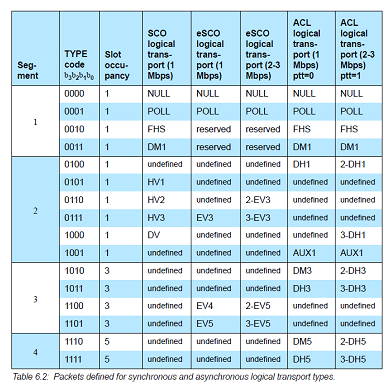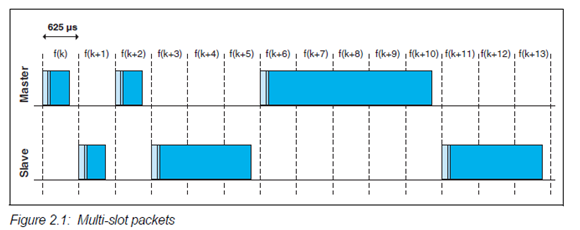Content Index:
Introduction : Bluetooth
Part 1: Bluetooth Framework
Part 2: Physical Layer
Part 3: Logical Transports (Link Layer)
Physical links are eventually managed by a combination of master – slave relationship and the time slots within the medium. The most cogent way to grasp how these slots are used for transferring data is to explore this within the context of the popular BT use cases given below.
- Hands free
&
- Music Playback (A2DP)
Hands free
Hands free use case is a critical one, this has to be full duplex and real time too which mandates a minimum guaranteed bandwidth otherwise the voice quality will take a hit. For achieving this circuit switched connection like behavior we need to reserve over the air slots for transmitting voice. The following two types of logical transports cater to this very stringent requirement.
- SCO (Synchronous Connection Oriented) &
- eSCO (Extended Synchronous Connection Oriented)
When link manager sets up above types of logical links it will make sure that a certain number of slots are reserved for its use, for more clarity please refer to the following figure.

The above diagram illustrates an eSCO connection with the following attributes.
- Total six slots are reserved for eSCO.
- Out of the six slots one slot is for master to slave Tx and one for slave to master.
- Four slots are reserved for retransmissions
- There are two unreserved slots between each eSCO window.
During the connection set up phase itself the devices will negotiate the above eSCO connection parameters. There may be multiple unreserved slots between two eSCO windows which may be used for other types of data transfers. eSCO connections and SCO connections work in a similar fashion but in case of SCO there are no re-transmissions and it does not support EDR modulation schemes. Hopefully this has explained how hands free profile is working.
Music Playback (A2DP)
Music play back involves streaming of music files from a device to BT enabled head set. This music data is usually encoded in some form during transfer and later it is decoded and played by the headset, this use case implements a Asynchronous connection oriented transport(ACL). There are no slots reserved for this type of a logical transport, in case of A2DP we can have the headset to be the master or the device to be the master but in either of the case only master can trigger the data transfer. An ACL link is established by exchanging ACL control packets and during the connection establishment the ACL link parameters are negotiated, this will also determine the frequency of the music data transfer, its encoding, the type of packets and this transmission will be frequent enough to guarantee a clear playback.
In case where SCO/eSCO and ACL transports are coexisting between two BT devices, it will make sure that the reserved SCO/eSCO slots are honored and ACL uses only the intermittent unreserved ones.
Now the crux of this logical transports lie in the packet types used, which is given in the table below.
As you can see above eSCO support more than 1 MBPS rates, this in turn means that EDR (Extended Data Rate) modulation scheme will be used for eSCO but not for SCO, similarly for ACL there are BDR and EDR modulations supported, usage of the packet type will determine the modulation scheme and vice versa is also true.
ACL transport is also used for other profiles like FTP, DUN, SAP etc. One an ACL connection is established to a device then all these application profiles will share this ACL link, multiplexing all these profiles over one link is responsibility of the L2CAP layer.




